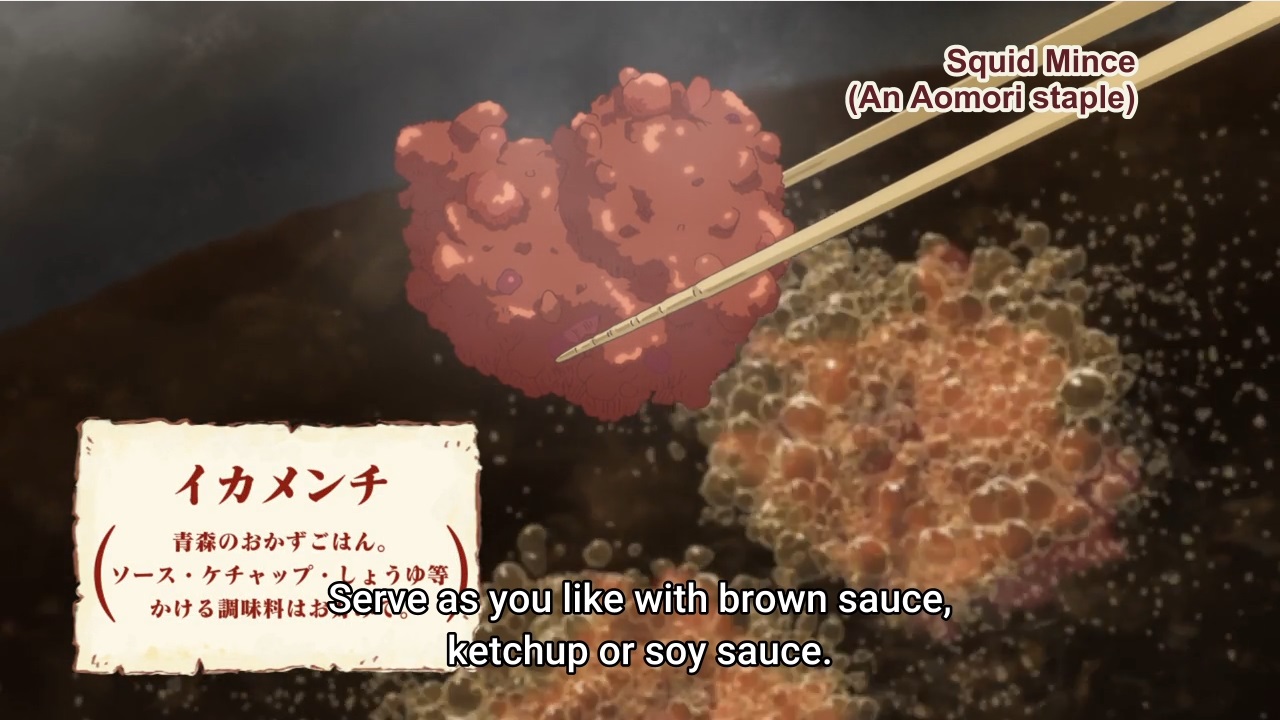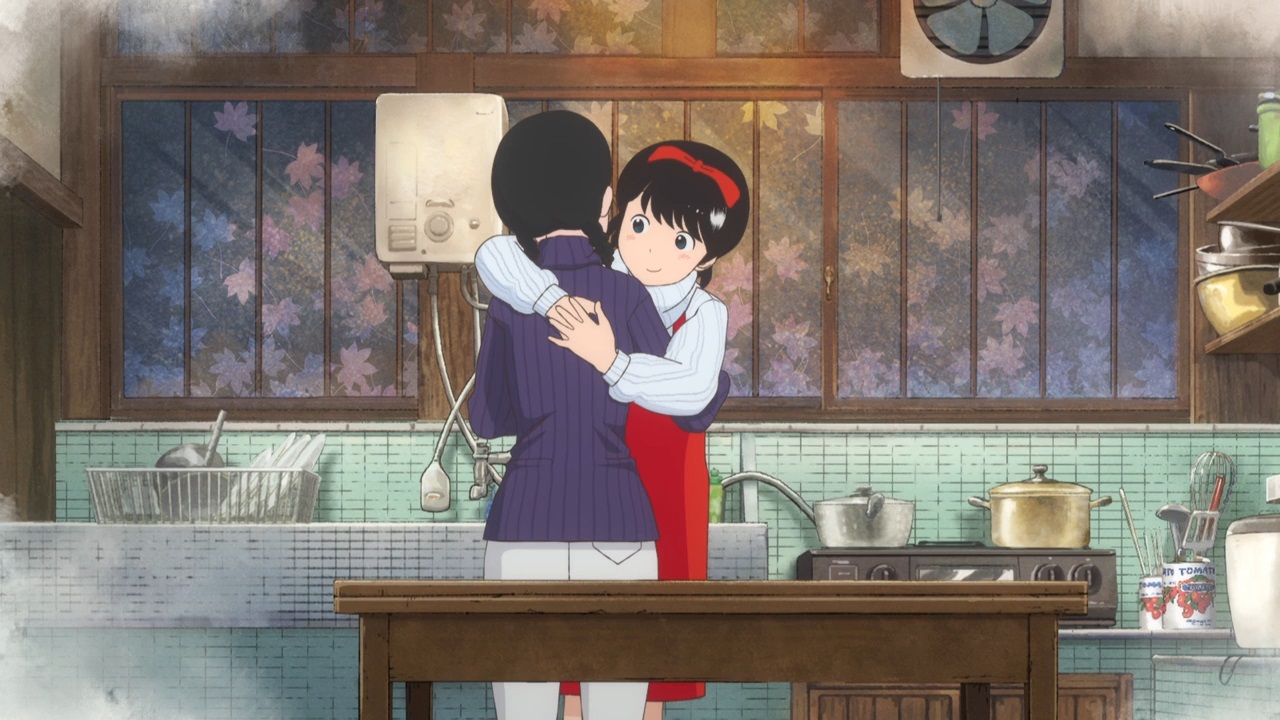Kiyo and Sumire wanted to become maiko, apprentice geisha, and came to Kyoto from snouwbound Aomori in the north of Japan. Sumire succeeded, Kiyo ..didn’t. Instead she became the live-in cook of the Maiko house Sumire is attached to. To be honest, it suits her much better than attempting to become a maiko ever did.

Maiko-San Chi No Makanai-San then is a slice of moe series that focuses on Kiyo’s daily life at the maiko house she shares with Sumire. A look behind the scenes of Kyoto’s geisha industry, if you will. It’s based on a manga series by Koyama Aiko. Unusually it was released as a monthly rather than a weekly anime, with the first episode released in February 2021 and the last in January 2022. That slower tempo of release suits the series well, with each episode taking place in the same month it’s released. In this way the series offers an insight in the rhythms of a maiko’s life.

Each episode is divided into three short, bite sized parts with each part separated by a short segment that discusses the food showcased in the previous part. Because this is a heavily food based show, not to be watched if you’ve skipped lunch. The cooking scenes have the best animation in the show, with close ups of food sizzling in a frying pan or Kiyo kneeding dough. Quite often the food on display is also much more obscure than the onigiri or takoyaki you get in other shows, the squid mince shown in the first episode, obscure even in Japan outside of Aomori prefecture. The connecting segments bracketing each chapter therefore have the useful function of explaining these foods and their history. They’re also done in a much simpler style; more illustrated than animated.

When talking about the quality of animation, we tend to concentrate on character design and the fluidity something is animated. Where Maiko-San Chi No Makanai-San‘s strengths lie is in something different: the ways in which it depicts its setting. The character designs are a bit simplified from the manga, but the backgrounds they act against are drop dead gorgeous even when completely mundane. It of course helps that it’s set in Kyoto, gorgeous in its own right, but what really struck me where the interiors of the maiko house, especially the kitchen. It is exactly the sort of somewhat old fashioned working kitchen that you’d expect yet it looks almost lush the way it has been drawn.
One minor criticism on the subtitles. Because the translation refuses to use honorifics, the varying levels of respect and familiarity the maiko have with each other and Kiyo is not reflected in the subtitles. Kiyo for example consistently calls Sumire Su-chan, even after the latter’s debut as a maiko with a new maiko name, while the rest of the cast do address her with her new name. In a series on such a quintessential Japanese subject like geishas, you’d expect the subtitles to be a litte bit more daring rather than flattening everything to basic English.